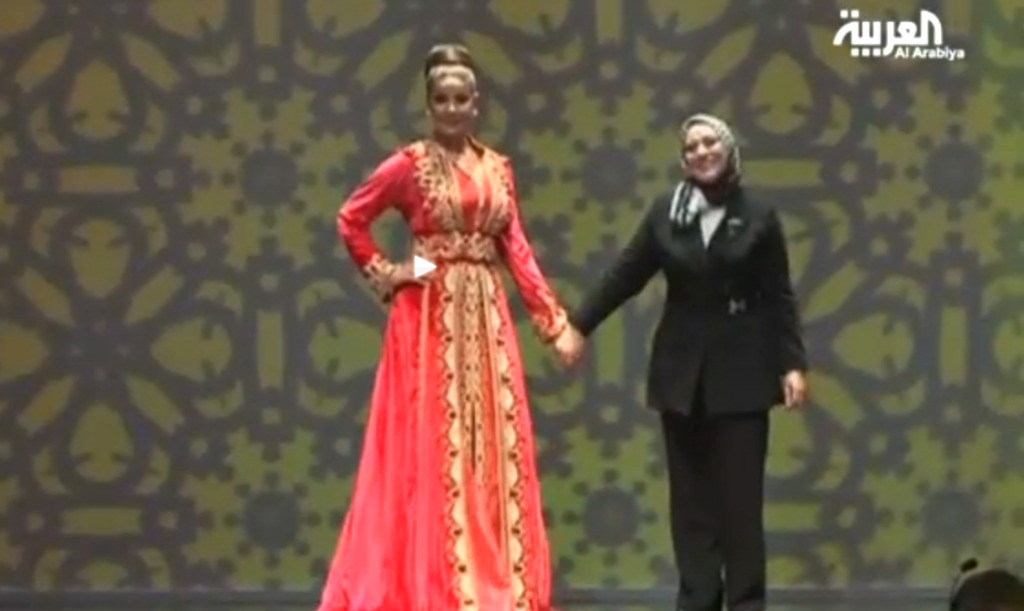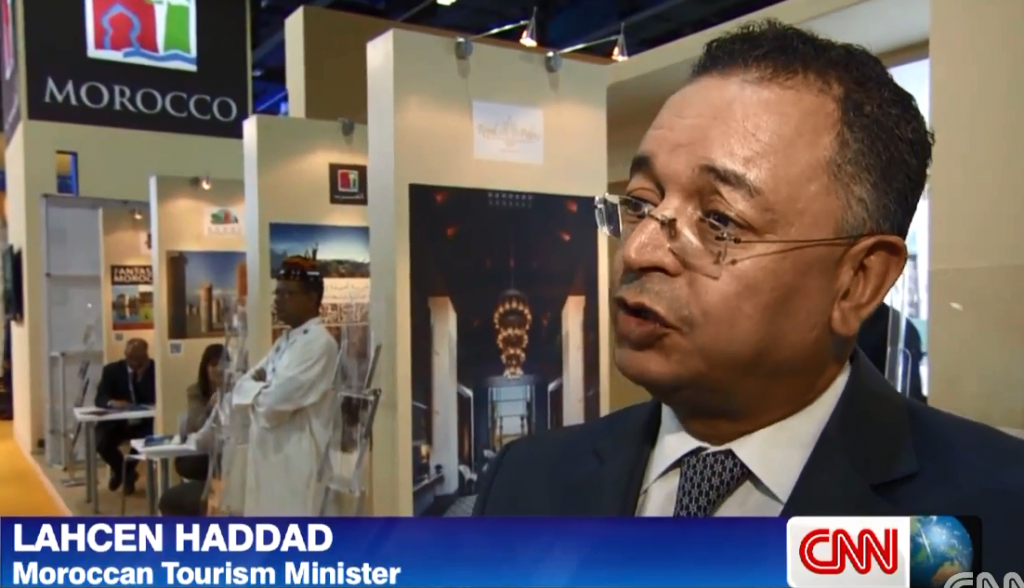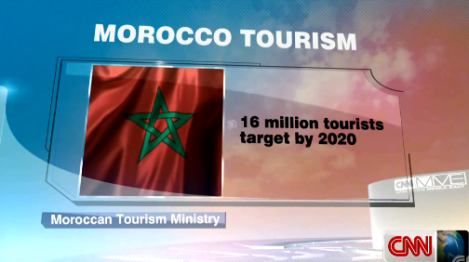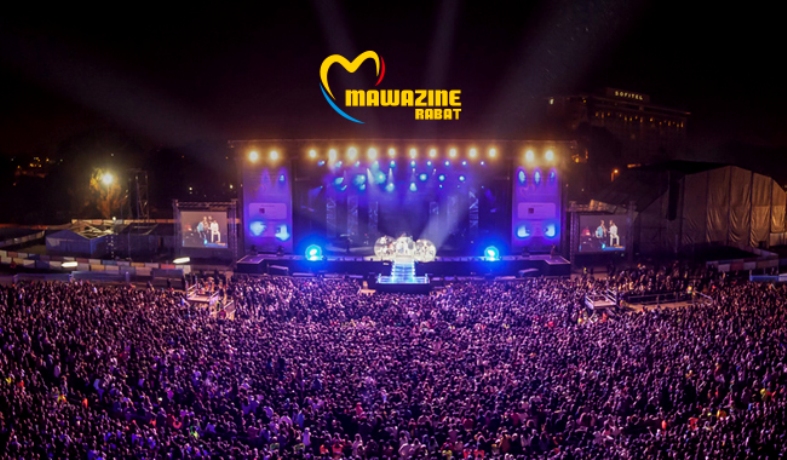.
![King Mohammed VI and Tunisian President Moncef Marzouki preside over signing ceremony of 23 bilateral agreements to enhance economic, social and security cooperation, and open up broader prospects for cooperation on integration of the Maghreb. Photo: MAP]()
King Mohammed VI and Tunisian President Moncef Marzouki preside over signing ceremony of 23 bilateral agreements to enhance economic, social and security cooperation, and open up broader prospects for cooperation on integration of the Maghreb. Photo: MAP
.
* Bilateral agreements of strategic importance, covering economic, social, and security issues, and opening up broad prospects for cooperation on integration of the Maghreb *
.
Maghreb Arab Press (Tunis, Tunisia, May 31, 2014) ― King Mohammed VI and Tunisian President Moncef Marzouki on Friday chaired the signing ceremony for 23 bilateral agreements at the Palace of Carthage in Tunis. The agreements are of high strategic importance, as they cover various economic, social and security fields, and open up broad prospects of cooperation for the integration of the Maghreb.
They are also marked by a significant openness on new areas of cooperation, including renewable energy, the environment, financial markets, and the promotion of human rights, as well as by the important involvement of the private sector, represented by the General Confederation of Moroccan Businesses (CGEM) and the Tunisian Union of Industry, Trade and Handicrafts (UTICA).
![]() The signing of these agreements reflects the will to support the transition that Tunisia is undergoing, and to enrich in a qualitative way the legal framework of bilateral cooperation.
The signing of these agreements reflects the will to support the transition that Tunisia is undergoing, and to enrich in a qualitative way the legal framework of bilateral cooperation.
The first agreement covers a Memorandum of Understanding between the Moroccan Academy of Diplomatic Studies and the Tunisian Diplomatic Institute for Training and Education, signed by Foreign Minister Salaheddine Mezouar and his Tunisian counterpart El Mounji El Hamidi.
The second agreement concerns an executive program of cultural cooperation for 2015-2017, signed by Mezouar and El Hamidi.
The third agreement relates to cooperation in the field of security, signed by Interior Minister, Mohamed Hassad and his Tunisian counterpart, Lotfi Benjeddou.
The fourth agreement, signed by Minister of Economy and Finance, Mohamed Boussaid and his Tunisian counterpart, Hakim Benhammouda, relates to regional integration and co-development.
The fifth agreement, signed by Minister of Industry, Trade, Investment and Digital Economy, Moulay Hafid El Alamy, and Tunisian Minister of Industry, Energy and Mining, Kamal Ben Naceur, on cooperation in the industrial and technology fields.
The sixth agreement is a memorandum of cooperation in the field of protection of industrial property between the Moroccan Office of Intellectual and Industrial Property and the Tunisian Institute for Standardization and Industrial Property, signed by Moulay Hafid El Alamy and Kamal Ben Naceur.
The seventh agreement, which focuses on an executive program of cooperation in the field of scientific research and technology, was signed by Minister of Higher Education, Scientific Research and Training, Lahcen Daoudi, and Tunisian Minister of Higher Education, Scientific Research, and Information and Communication Technology, Taoufik Jelassi.
![]() The eighth agreement, a draft partnership agreement and cooperation between the Ministries of Education of both countries and the National Council for Human Rights and the Arab Institute for Human Rights, was signed by Minister of National Education and Vocational Training, Rachid Belmokhtar and his Tunisian counterpart, Fethi El Jerray.
The eighth agreement, a draft partnership agreement and cooperation between the Ministries of Education of both countries and the National Council for Human Rights and the Arab Institute for Human Rights, was signed by Minister of National Education and Vocational Training, Rachid Belmokhtar and his Tunisian counterpart, Fethi El Jerray.
The ninth agreement, which covers a cooperation protocol in the field of health, was signed by Minister of Health, Hussein El Ouardi and his Tunisian counterpart, Mohammed Essaleh Benammar.
The tenth framework agreement on cooperation in the field of logistics, was signed by Minister of Infrastructure, Transport and Logistics, Aziz Rebbah and Tunisian Minister of Transport, Shihab Ben Ahmed.
The 11th agreement is a memorandum of understanding on cooperation between the Higher Institute of Maritime Studies of Casablanca and Tunisia’s Mediterranean Institute for Training in Maritime Professions, signed by Aziz Rebbah and Shihab Ahmed Ben.
The 12th agreement covers cooperation in the field of religious affairs and endowments and was signed by Minister of Endowments and Islamic affairs, Ahmed Toufiq and his Tunisian counterpart Mounir Tlili.
The 13th agreement is an executive program of cooperation in the field of religion and waqf for 2014-2017, and was signed by Ahmed Toufiq and Mounir Tlili.
The 14th agreement covers an executive program of cooperation in the field of tourism (2014-2017), signed by Minister of Tourism, Lahcen Haddad and his Tunisian counterpart, Amal Karboul.
The 15th agreement is a cooperation protocol between the Tangier Higher Institute of Tourism and the Tunisian Higher Institute of Tourism Studies of Sidi Drif, signed by Lahcen Haddad and Amal Karboul.
The 16th agreement covers cooperation in the fields of public service, the modernization of public administration and governance. It was signed by Minister-delegate for public service and the modernization of the administration, Mohamed Moubdii and Tunisian Secretary of State for Governance and Public Service, Anwar Benkhalifa.
The 17th agreement, which covers cooperation in the field of the environment, was signed by Minister-delegate for the environment, Hakima Al Haiti and Tunisian Secretary of State for Sustainable Development, Mounir El Mejdoub.
The 18th agreement, which concerns cooperation between CGEM and UTICA, was signed by Meriem Bensaleh Chaqroun, President of CGEM, and Widad Bouchmaoui, President of UTICA.
The 19th agreement on cooperation between the National Railroad Office (ONCF) and the Tunisian National Railway Company was signed by ONCF Director General, Mohamed Rabii Lakhlii, and CEO of the Tunisian company, Mokhtar Sadek.
The 20th agreement relating to cooperation between the National Office of Hydrocarbons and Mines (ONHYM) and the Tunisian Oil Activities Company (ETAP), was signed by Amina Benkhadra, ONHYM Director General and Mohamed al Akroute, CEO of ETAP.
The 21st agreement covers a draft protocol of cooperation between the Casablanca Stock Exchange and the Tunis Stock Exchange. It was signed by Karim Haji, Managing Director of the Casablanca Stock Exchange, and Mohamed Bichou, Director General of the Tunis Stock Exchange.
The 22nd agreement provides for promoting partnership in the development of solar energy. It was signed by Mustapha Bakkoury, CEO of the Moroccan Agency for Solar Energy (MASEN) and Hamdi Harrouch, Director General of the National Agency for Energy Management.
The 23rd agreement covers the tripartite cooperation between the Banque Marocaine du Commerce Extérieur (BMCE), Banque Nationale Agricole tunisienne (BNA) and Banque de Tunisie. It was signed by CEO of BMCE, Othman Benjelloun, President and CEO of Banque de Tunisie, Habib Ben Saad, and CEO of BNA, Jaafar Khattech.
The post Morocco King, Tunisia President chair signing of agreements on economic, security cooperation appeared first on Morocco On The Move.



 Mohamed Benhsain from the “Abraj Association for Development” was among the first to visit the project’s centre in Casablanca’s working-class Derb Sultan neighborhood. “This scheme came at the right time. We need it in order to get closer to young people,” he said.
Mohamed Benhsain from the “Abraj Association for Development” was among the first to visit the project’s centre in Casablanca’s working-class Derb Sultan neighborhood. “This scheme came at the right time. We need it in order to get closer to young people,” he said.


 It’s hard to imagine a more regal place for the vessel set to contain Wu-Tang’s album as it awaits its next move. “We’ve very lucky to be able to hide it here, away from prying eyes,” says the creator of the box, a British-Moroccan artist known by the mononym
It’s hard to imagine a more regal place for the vessel set to contain Wu-Tang’s album as it awaits its next move. “We’ve very lucky to be able to hide it here, away from prying eyes,” says the creator of the box, a British-Moroccan artist known by the mononym 

 His latest film, “
His latest film, “

 The meeting brings together women ministers, MPs, and councilors from Angola, Benin, Cameroon, Central African Republic, Gabon, the Ivory Coast, Guinea, Kenya, Mauritania, Libya, Mali, Madagascar, Senegal, Tanzania, and Sierra Leone, among other countries on the continent.
The meeting brings together women ministers, MPs, and councilors from Angola, Benin, Cameroon, Central African Republic, Gabon, the Ivory Coast, Guinea, Kenya, Mauritania, Libya, Mali, Madagascar, Senegal, Tanzania, and Sierra Leone, among other countries on the continent.










 The first year of the project focused on exchange visits between London and Rabat for MAP management and the Foundation’s consultants. The feedback on the visits from the Moroccan delegation was very positive. “What was useful for me was the interaction between MAP and Thomson Reuters teams, which turned each working session into a real exchange of ideas and experience from two different approaches,” said Noureddine Zouini, MAP News Editor and Deputy Director of Information. The next step was to provide Moroccan journalists from MAP and other news outlets with the opportunity to develop their professional skills with a series of training courses led by veteran former Reuters journalists. Our training courses simulated a real working environment to provide participants with the opportunity to hone their skills and learn the latest reporting techniques across a variety of media platforms including online, print and video. Drawing on the experience and knowledge of specialized Reuters trainers, the courses covered key topics of interest to the Moroccan media.
The first year of the project focused on exchange visits between London and Rabat for MAP management and the Foundation’s consultants. The feedback on the visits from the Moroccan delegation was very positive. “What was useful for me was the interaction between MAP and Thomson Reuters teams, which turned each working session into a real exchange of ideas and experience from two different approaches,” said Noureddine Zouini, MAP News Editor and Deputy Director of Information. The next step was to provide Moroccan journalists from MAP and other news outlets with the opportunity to develop their professional skills with a series of training courses led by veteran former Reuters journalists. Our training courses simulated a real working environment to provide participants with the opportunity to hone their skills and learn the latest reporting techniques across a variety of media platforms including online, print and video. Drawing on the experience and knowledge of specialized Reuters trainers, the courses covered key topics of interest to the Moroccan media.

 “We wanted to associate empires with splendor. With splendor, we are in some way paying tribute to the kaftan because it represents beauty, women, grace and glamour. It goes exactly with the event’s concept. We were looking for the contradiction between empires and splendor which stands for power and grace at the same time,” said the event’s production director, Zineb Tainouri. Thought to have originated in Iran, the kaftan is now a trademark of Moroccan fashion, and is worn by Moroccan women seeking to combine tradition with modern style. Each kaftan is a unique work of art that needs hours of meticulous work by dozens of traditional artisans who work under the supervision of the designer. While some designers prefer to highlight Morocco’s cultural heritage and refuse to make drastic changes to the garment, others choose to modernize it to reflect international trends.
“We wanted to associate empires with splendor. With splendor, we are in some way paying tribute to the kaftan because it represents beauty, women, grace and glamour. It goes exactly with the event’s concept. We were looking for the contradiction between empires and splendor which stands for power and grace at the same time,” said the event’s production director, Zineb Tainouri. Thought to have originated in Iran, the kaftan is now a trademark of Moroccan fashion, and is worn by Moroccan women seeking to combine tradition with modern style. Each kaftan is a unique work of art that needs hours of meticulous work by dozens of traditional artisans who work under the supervision of the designer. While some designers prefer to highlight Morocco’s cultural heritage and refuse to make drastic changes to the garment, others choose to modernize it to reflect international trends.









 The participation of the UAE aims at strengthening the feeling of pride in the local heritage. It also seeks to elevate this heritage and promote the efforts that have been made to inscribe the elements of intangible heritage on the UNESCO’s Representative List of the Intangible Cultural Heritage of Humanity. The UAE has recently succeeded in registering falconry, sadu and taghruda (a poetry form) as part of the world heritage at the UNESCO. On this occasion Mohammed Khalaf Al Mazrouei, Adviser for Culture and Heritage in the Court of the Crown Prince of Abu Dhabi, and Chairman of the Cultural Programs and Heritage Festivals Committee – Abu Dhabi said: “Certainly, we would like to remind, here, of the authentic and deep-rooted bilateral ties that have existed between the two countries and peoples, and this for decades.”
The participation of the UAE aims at strengthening the feeling of pride in the local heritage. It also seeks to elevate this heritage and promote the efforts that have been made to inscribe the elements of intangible heritage on the UNESCO’s Representative List of the Intangible Cultural Heritage of Humanity. The UAE has recently succeeded in registering falconry, sadu and taghruda (a poetry form) as part of the world heritage at the UNESCO. On this occasion Mohammed Khalaf Al Mazrouei, Adviser for Culture and Heritage in the Court of the Crown Prince of Abu Dhabi, and Chairman of the Cultural Programs and Heritage Festivals Committee – Abu Dhabi said: “Certainly, we would like to remind, here, of the authentic and deep-rooted bilateral ties that have existed between the two countries and peoples, and this for decades.”

 Defterios reports that “Morocco has been a popular destination for years, and having largely escaped the Arab Spring turmoil, the country now wants to attract 16 million tourists by 2020, 6 million more than they had in 2010.
Defterios reports that “Morocco has been a popular destination for years, and having largely escaped the Arab Spring turmoil, the country now wants to attract 16 million tourists by 2020, 6 million more than they had in 2010. 


 As a result, locals would often clear the trees to make way for more lucrative and less labor-intensive crops, such as oranges, bananas and tomatoes. But Zoubida Charrouf, a chemistry professor at Mohammed V University in Rabat, Morocco, saw strong economic and ecological potential in the tree, by partly mechanizing traditional oil production processes and involving local communities. “The idea was to transform the
As a result, locals would often clear the trees to make way for more lucrative and less labor-intensive crops, such as oranges, bananas and tomatoes. But Zoubida Charrouf, a chemistry professor at Mohammed V University in Rabat, Morocco, saw strong economic and ecological potential in the tree, by partly mechanizing traditional oil production processes and involving local communities. “The idea was to transform the 

 After a pause in the aftermath of the financial crisis, global flows are once again expanding (with the notable exception of financial flows, which remain almost 70 percent below their pre-crisis peak) and accelerating as increasingly prosperous emerging economies become more engaged in cross-border commerce and exchange, enabled by the rapid spread of digital technologies. But the participation of countries varies enormously. To provide a snapshot of this evolving landscape of connections, we developed the McKinsey Global Institute Connectedness Index, which looks at 131 countries across the five main flows in 1995 and 2012. By looking at connectedness to all the major flows―rather than just manufacturing exports―we obtain a truer picture. And, importantly, the MGI index differs from others because it corrects for the size of country. If we don’t do this, a large diversified economy looks relatively closed because flows are a modest share of GDP, and smaller countries’ connectedness is exaggerated because their flows are a higher share of GDP.
After a pause in the aftermath of the financial crisis, global flows are once again expanding (with the notable exception of financial flows, which remain almost 70 percent below their pre-crisis peak) and accelerating as increasingly prosperous emerging economies become more engaged in cross-border commerce and exchange, enabled by the rapid spread of digital technologies. But the participation of countries varies enormously. To provide a snapshot of this evolving landscape of connections, we developed the McKinsey Global Institute Connectedness Index, which looks at 131 countries across the five main flows in 1995 and 2012. By looking at connectedness to all the major flows―rather than just manufacturing exports―we obtain a truer picture. And, importantly, the MGI index differs from others because it corrects for the size of country. If we don’t do this, a large diversified economy looks relatively closed because flows are a modest share of GDP, and smaller countries’ connectedness is exaggerated because their flows are a higher share of GDP.






 The Grammy Award winning artist captivated the crowd with his singing, steps and style on stage at the OLM Souissi, as he performed for the first time ever in Morocco before a huge crowd of fans and followers.
The Grammy Award winning artist captivated the crowd with his singing, steps and style on stage at the OLM Souissi, as he performed for the first time ever in Morocco before a huge crowd of fans and followers. For decades the music festival has brought together exceptional artists to perform and promote openness to different cultures through the universal language of music.
For decades the music festival has brought together exceptional artists to perform and promote openness to different cultures through the universal language of music.

 The signing of these agreements reflects the will to support the transition that Tunisia is undergoing, and to enrich in a qualitative way the legal framework of bilateral cooperation.
The signing of these agreements reflects the will to support the transition that Tunisia is undergoing, and to enrich in a qualitative way the legal framework of bilateral cooperation. The eighth agreement, a draft partnership agreement and cooperation between the Ministries of Education of both countries and the National Council for Human Rights and the Arab Institute for Human Rights, was signed by Minister of National Education and Vocational Training, Rachid Belmokhtar and his Tunisian counterpart, Fethi El Jerray.
The eighth agreement, a draft partnership agreement and cooperation between the Ministries of Education of both countries and the National Council for Human Rights and the Arab Institute for Human Rights, was signed by Minister of National Education and Vocational Training, Rachid Belmokhtar and his Tunisian counterpart, Fethi El Jerray.

 The Moroccan monarch is on three-day official visit to Tunisia, the birthplace of the Arab Spring.
The Moroccan monarch is on three-day official visit to Tunisia, the birthplace of the Arab Spring.


 One of her photographs is part of the permanent collection at the Hunter Museum of American Art here in Chattanooga. While she was here, Essaydi sat down to talk to WUTC’s Richard Winham.
One of her photographs is part of the permanent collection at the Hunter Museum of American Art here in Chattanooga. While she was here, Essaydi sat down to talk to WUTC’s Richard Winham.







